How much does Leg Lengthening Surgery cost in Iran?
How much does height reduction surgery cost?
Limb lengthening surgery cost in Iran
Leg Lengthening Surgery cost in Iran is around $ 13000 while the average Leg Lengthening Surgery cost in Turkey $ 30000,in the UK is $ 150000, in the USA $ 90000 and in India $ 11000.
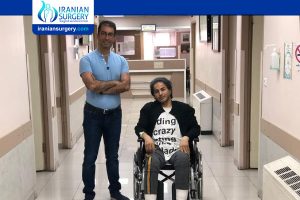
Read more about : The Swedish patient saved $ 90,000 by choosing Iran over the United States to have leg lengthening surgery.
Read more about : Siavash from Germany talks about his successful experience in leg lengthening surgery in Iran.
Read more about : Knee replacement surgery cost(Zimmer brand)
Free Consultation
What is Leg Lengthening Surgery?
Leg lengthening surgery is an inpatient procedure performed in a hospital that uses your body’s own capacity to form new bone, while soft tissue, nerves, and blood vessels stretch slowly over time to increase the length of a leg that is shorter than your other leg. One of your leg bones will be cut and implanted with a metal lengthening device, which slowly distracts, or increases the space between, the bones.
This process is performed gradually at a rate of about 1 mm per day until the desired length of bone is achieved. As the leg bone is slowly distracted, your body will generate new bone cells to fill in the space.
_________________________________________________________________________________________________________________________________________
About Iranian Surgery
Iranian surgery is an online medical tourism platform where you can find the best orthopedic Surgeons in Iran. The price of Leg lengthening Surgery in Iran can vary according to each individual’s case and will be determined based on photos and an in-person assessment with the doctor.
For more information about the cost of Leg Lengthening Surgery in Iran and to schedule an appointment in advance, you can contact Iranian Surgery consultants via WhatsApp number +98 901 929 0946. This service is completely free.
_________________________________________________________________________________________________________________________________________
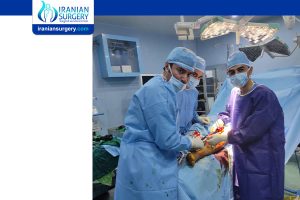 Before Leg Lengthening Surgery
Before Leg Lengthening Surgery
How to Prepare
The surgical team will provide you with more detailed instructions on what you need to do in the days and hours before the surgery. It is recommended that you stay active, eat a healthy diet, and stop smoking prior to any operation to promote optimal healing and a smooth recovery.
You may need to stop taking certain medications in the days leading up to the surgery to prevent excess bleeding or interaction with anesthesia during the operation. Always consult with your doctor about all prescriptions, over-the-counter medications, and supplements that you are taking.
After the operation, you will typically stay in the hospital for two to three days. You will not be allowed to drive to or from the hospital before or after your surgery, so make sure to make arrangements for a friend or family member to provide transportation for you.
Minimizing stress and prioritizing good mental and emotional health are also important to lowering levels of inflammation in the body to aid in your recovery. The healthier you are when you go into surgery, the easier your recovery and rehabilitation will be.
Read more about : Can you run after leg lengthening surgery?
Read more about : How long does it take to recover from leg lengthening surgery?
What to Expect
Leg lengthening surgery will be a procedure decided between you and your doctor and will be scheduled in advance depending on the availability of your surgeon and the operating room.
Before the Surgery
On the day of your leg lengthening surgery, you will be taken to a pre-op room where you will be asked to change into a gown. You will undergo a brief physical examination and answer questions about your medical history from the surgical team. You will lie down on a hospital bed, and a nurse will place an IV in your arm or hand for delivering fluids and medications. The surgical team will use the hospital bed to transport you in and out of the operating room.
The osteotomy, or bone cutting, and placement of an external fixator or internal lengthening nail can be performed under general anesthesia, which will put you to sleep during the operation, or under epidural anesthesia, where the anesthesia medication is injected into your low back and numbs you from the waist down. With epidural anesthesia, you may be awake during the surgery, but should not feel any pain from the procedure.
Leg lengthening surgery helps correct significant leg length discrepancies, but it carries a number of risks, including:
. Bone infection (osteomyelitis)
. Poor bone healing
. Bone growth restriction
. Nerve damage
. Injury to surrounding muscles and blood vessels
. Excess bleeding
. Adverse reaction to anesthesia
. Blood clots
. Nausea and vomiting
. Joint stiffness
. Bone length may not be exact, such as longer or shorter than planned
. Muscle contraction (muscle shortens)
. Problems with the new bone forming
Always discuss with your doctor about the possible risks of leg lengthening surgery to determine if it is an appropriate option for you given the extent of your leg length discrepancy and how it is affecting your daily functioning.
__________________________________________________________________________________________________________________________________________
Read more about : Height Reduction Surgery (Bone-shortening Surgery)
Read more about : Limb Lengthening Surgery-External Fixators
Read more about : Lengthening over Nails (LON)
Read more about : Is there any age limit for limb lengthening surgery?
Read more about : Is Limb Lengthening Surgery Safe?
Read more about : Does limb lengthening hurt?
Read more about : Leg lengthening surgery before and after photos
Read more about : Leg lengthening surgery scars
Read more about : Success rate of limb lengthening surgery
Read more about : Walking after Leg Lengthening Surgery
Read more about : Running after Limb (Leg) Lengthening
__________________________________________________________________________________________________________________________________________
Purpose of Leg Lengthening Surgery
Many patients who are candidates for leg lengthening surgery have two legs of different lengths as the result of:
. A congenital birth defect
. Growth plate injury to a leg bone as a child
. Malunion of a previous fracture where the leg bone heals out of alignment
. Nonunion of a previous fracture where the leg bone does not heal at all
Patients with skeletal dysplasias or other bone disorders may also qualify for leg lengthening surgery if there is a significant difference in leg lengths between the right and left sides, affecting their ability to walk and move properly.
Other conditions that can cause a significant leg length discrepancy requiring leg lengthening surgery include:
. Poliomyelitis
. Cerebral palsy
. Legg-Calve-Perthes disease
If you suspect you have a leg length discrepancy, you should receive a physical examination from an orthopedic physician to determine if there is a true leg length discrepancy due to different leg bone lengths or if there is an apparent leg length discrepancy where one leg appears to be shorter even though both leg bones are the same length.
Apparent leg length discrepancies can result from problems with the spine, hips, or sacroiliac joints. Physical therapy is often effective for restoring proper alignment of the muscles and joints to correct the issue. If your doctor suspects you may have a true leg length discrepancy, x-rays will be used to confirm the difference in bone length.
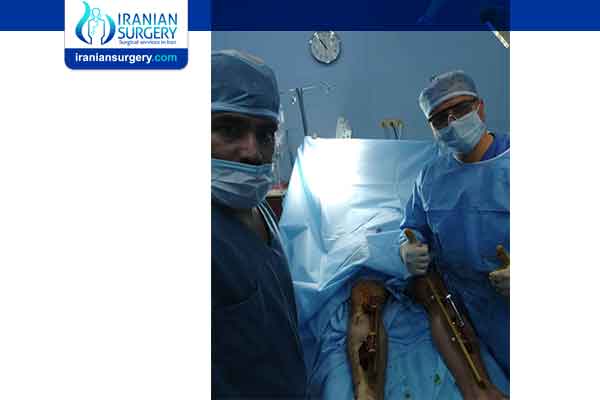
Read more about : How Many Centimeters Can I Get after Leg Lengthening Surgery?
Read more about : Limb lengthening recovery time
Read more about : Internal limb lengthening surgery
Read more about : Leg lengthening recovery time
Read more about : Exercises after leg length discrepancy
Leg Length Discrepancies
Leg length discrepancies can cause back, hip, knee, ankle, and foot pain, and can accelerate degeneration of the joints of the leg due to irregular bone alignment and wear and tear. It is important to seek treatment if you think you may have a leg length discrepancy and discuss your options with your doctor to prevent further musculoskeletal complications from occurring.
Whether you have an apparent or true leg length discrepancy, if the discrepancy is minor, a heel lift or shoe lift can be added to your footwear to add extra height to even out your leg lengths to make walking and standing more comfortable. Significant leg length discrepancies often require surgery to correct.
During Leg Lengthening Surgery
During Procedure
The first part of the operation involves an osteotomy in which the leg bone that needs to be lengthened is cut. Depending on where the length discrepancy originates, your femur, the upper leg bone, or tibia, the lower leg bone, may be cut.
Your leg will then be stabilized using metal external, internal, or a combination of external and internal fixation devices (internal lengthening nail), and the lengthening device will be inserted with a bone drill and metal pins, plates, screws, and wires.
. An external fixator is a metal frame that sits outside the leg and is connected to the bone with pins, screws, and wires. The external fixator can be adjusted from the outside to increase the space between the two parts of the leg bone that were cut.
. An internal lengthening nail is a motorized metal nail or rod that is inserted into the bone marrow cavity of the leg bone. It is controlled with a remote control device that rotates a magnet in the nail, causing the nail to elongate like a telescope and increase the length of the bone over time.
Lengthening will be done at a rate of about 1 mm (millimeter) per day. This stage may start a few days or weeks after the osteotomy and last for a couple of months. Depending on your device, you will adjust it several times during the day. Your body will slowly regenerate new bone in the small space that was created between the bone ends.
Once the desired length is achieved, the metal lengthening device will stay in place for several months until the bone fully heals and solidifies. The lengthening device will then be surgically removed in an outpatient procedure.
After the new bone has fully formed, it is just as strong as any other bone and is not at any increased risk for weakening or breakdown.
The osteotomy can take about 2 hours. This depends on the extent of the surgery.
Read more about : Limb Lengthening Surgery Pros and Cons
Read more about : Diagnosis code for leg length discrepancy
Read more about : What is the most common complication of bone lengthening using external fixation?
Read more about : Can my legs become shortened again after leg lengthening surgery?
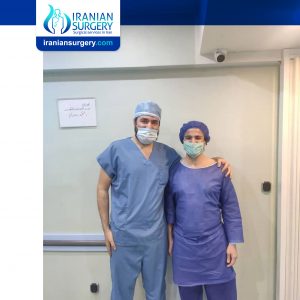
After Leg Lengthening Surgery
After the Surgery
After your surgery, you will stay in a recovery room for several hours and then be transported to a hospital room. Most patients stay in the hospital for two to three days after the surgery. Sometimes a cast is placed on the leg for three to four weeks.
You will receive inpatient rehabilitation on the day of your surgery, where a physical therapist will assist you with getting in and out of bed, transferring to a chair and toilet, using a walker or crutches to walk, and going up and down stairs. You will not be able to bear any weight on the leg that was operated on during this time. Crutches are used for six to eight weeks.
Leg lengthening will start between a few days to a week after the surgery. This period between the operation and the beginning of leg lengthening is called the latency period, which allows for the areas of the bone that were cut to form a bone callus to protect the bone from further damage.
Recovery
After the operation is completed, you will undergo two phases of recovery, the distraction phase and consolidation phase.
. Distraction Phase
During the distraction phase, the leg bone that was cut will gradually be pulled apart by the fixation devices. This will promote distraction osteogenesis, during which the pressure applied to the bone by being pulled apart stimulates new bone growth at the site where the bone was cut for the osteotomy.
Bone growth continues as the gap between the bones is distracted, or increased, by ¼ mm four times a day for a total of a 1 mm increase each day. This process is repeated until the leg bone has achieved the desired length. Approximately 1 inch or 2.5 cm of length can be acquired each month.
During the distraction phase, you will use a walker or crutches to move around while maintaining a non-weight bearing status on your operated leg and attending physical therapy two to five times a week. It is crucial that you do not bear any weight on your leg by standing or walking during the distraction phase to allow your leg to heal properly.
Even though the typical rate of lengthening is 1 mm per day, some people take longer to heal and form new bone, especially those that smoke or have diabetes. Your doctor will want to see you every 7-14 days during this phase to make sure that the regenerated bone, muscles, and nerves are responding well to lengthening.
. Consolidation Phase
The second phase of treatment is the consolidation or healing phase, during which the new bone formation begins to harden and heal completely. You will gradually be able to put more weight on your leg and begin walking without crutches when your pain levels have decreased and you have built up enough strength in your leg to tolerate standing and walking without assistance.
Physical therapy plays an important role in maintaining proper joint mobility, range of motion, and leg strength, and can aid in your recovery after leg lengthening surgery.
For every month of lengthening, it can take an additional one to two months of recovery in the consolidation phase. The lengthening device will stay in the leg during the entire time of both the distraction and consolidation phases.
Coping with Recovery
Recovery from leg lengthening surgery can be a tedious process as bone distraction and new growth must occur gradually over several weeks or months. The amount of time it takes the bone to heal depends on the amount of lengthening: Each centimeter of lengthening takes 36 days of healing.

After the surgery, you will need:
. Frequent visits to your healthcare provider to adjust the lengthening device. The amount of time the lengthening device is used depends on the amount of lengthening needed
. Special care of the pins or screws holding the device to prevent infection
. Supplements like vitamin D3 increase bone strength
Because the blood vessels, muscles, and skin are involved, it is important to check your skin color, temperature, and sensation of your foot and toes frequently. This will help monitor any changes to blood vessels, muscles, or nerves as early as possible.
It is important to follow all instructions from your surgeon and physical therapist to promote optimal healing and recovery for the best possible outcome. Recommendations for optimal recovery include:
. Prioritizing getting enough sleep at night, at least seven to eight hours, to promote healing.
. Eating a healthy diet and managing a healthy weight
. Staying hydrated
. Maintaining a positive attitude and learning how to cope with and manage stress
. Following your exercise program as prescribed by your physical therapist
. Staying active and limiting the amount of time you spend sitting each day
. Use crutches or a walker. Do not put weight on your leg until your doctor gives you permission.
Read more about : Limb length discrepancy treatment
Read more about : Causes of Limb Length Discrepancy
Read more about : Limb Length Discrepancy Symptoms
Read more about : Limb Length Discrepancy
When to Call a Doctor
Contact your doctor if you experience any of the following:
. Signs of infection, such as fever or chills
. Redness, swelling, increasing pain, excessive bleeding, or discharge around the incision or pin and wire sites.
. Pain and/or swelling in the feet, calves, or legs
. Pain that you cannot control with the medication you were given
. Cough, shortness of breath, chest pain
. Severe nausea or vomiting
. Numbness, tingling, or loss of feeling in your leg, knee, or foot
. Problems or concerns about the fixation devices
Long-Term Care
There may be a residual decrease in muscle strength and power after limb-lengthening surgery, but it should not adversely affect your ability to perform everyday functional activities.
Bone lengthening is completely successful about four out of 10 times. It has a high rate of complications and need for further surgeries. Joint contractures (permanent tightening of the muscles, tendons, skin, and nearby tissues that causes the joints to shorten and become very stiff) may occur.
Possible Future Surgeries
Leg lengthening surgery can usually be performed to correct a leg length discrepancy of two inches at a time. If there is a larger discrepancy in leg length, the process may have to be repeated later on after the first round of surgery, distraction, and consolidation has successfully been completed.
After the consolidation phase has been completed and the new bone has fully solidified and healed, the lengthening device is then surgically removed. This is usually completed as an outpatient procedure and typically does not require staying overnight in a hospital. If an external fixator was used, you may have to wear a brace or cast for three to four weeks after removal.
Lifestyle Adjustments
While certain activities should be avoided, it is also very important that you limit how much time you spend sitting or lying in bed each day. Staying active is crucial for recovery and preventing deconditioning from a sedentary lifestyle.
Remember to:
. Avoid staying in one position for too long, which includes lying down, sitting, or standing.
. Try to get up and walk every one to two hours during the day to stay active and prevent blood clots. You can gradually increase the amount of time or distance you walk as you progress with recovery.
. Do not push yourself to do too much too soon. Overexerting yourself can increase your pain and delay your recovery.
. Attend all of your regularly scheduled physical therapy sessions as recommended by your doctor and follow up with a home exercise program prescribed by your physical therapist.
Leg lengthening surgery success rate
Leg lengthening has a 95% success rate with minimal scarring as a result of the small incisions used to access the leg bones.
Leg Lengthening Surgery Cost
The cost of Leg lengthening surgery in Iran is about $ 8000.


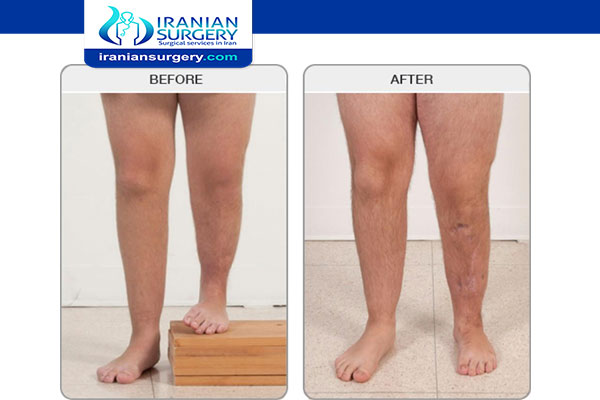
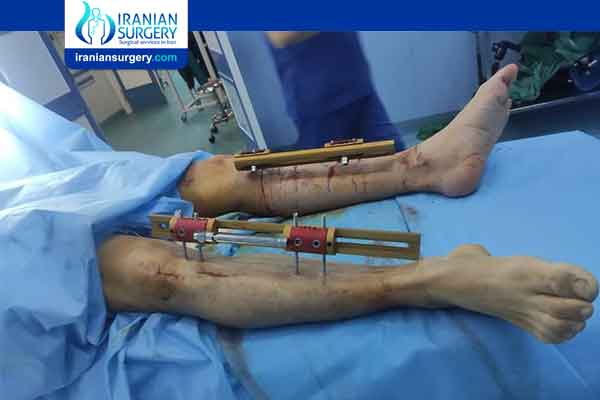
6 Comments
Hi my name is Shawn. I am an American thinking of traveling to Iran for a leg lengthening surgery. I would most likely do surgeries in both legs in both femurs and tibias simultaneously if medically possible. I would like to grow four inches (6cm) in both legs. Two inches in each femur and two inches in each tibia. So a total of 12cm (4 inches in leg length).
What would be the total cost for such a treatment, including physical therapy costs, medications, etc ? I would prefer internal extenders as opposed to external extenders.
As I understand it this would be a 7-9 month recovery time and several visits to the doctor for check ups and also physical therapy visits during the healing process. As well as a final procedure to have the extenders removed from my legs. Would I be able to stay in Iran during the several month long healing process ? If not how would I be able to complete this surgery in Iran as an American that would need to travel to and remain in Iran until the healing process was complete.
Please reply at your earliest convenience.
Kind regards,
Shawn
Hello Shawn. thank you for contacting us
hope you are having a good day.
medically we would suggest that you do tibia this year and then femur next year.
each LON surgery has 3months recovery cycle and 1 year till the doctors take out the nail from your leg.
so you can get 6 cm by this surgery in first year and at second surgery another 6 cm.
you can come to Iran, we will provide you medical visa, translator, accommodation
transport
physical therapy
medication
and your costs would be around 17000 usd as a full package.
you can stay in Iran for 3 months ,go back. Home and then get back in 9 months, remove the nail. and start the second surgery.
you can contact us via email. or what’s app for more information on this number +989019290946
hello sir , do you also provide fitbone surgery for limb lengthening??
hello there yes we provide the best material with newest techniques and we have a very good experience and patient satisfaction in Limb lengthening surgeries. for more information please message our agents via what’s app on this number +989019290946
Do you still do limb lenghtening?
Hi, we no longer offer this surgery due to its multiple side effects. Limb lengthening can permanently damage your ability to walk, and your physical and mental health.
Read more about : Leg Lengthening Surgery Complications and Risks